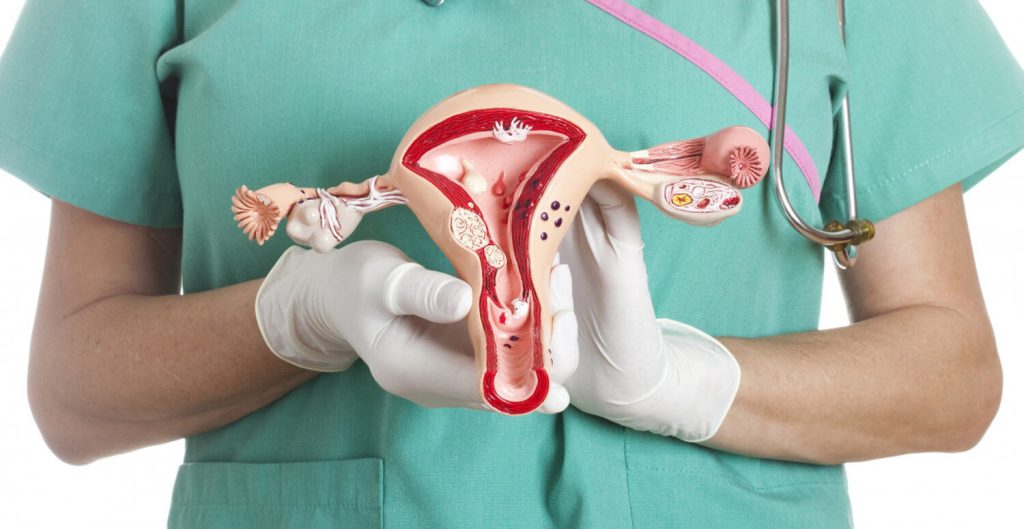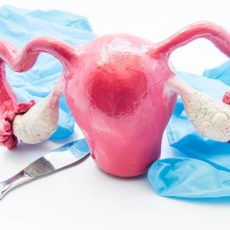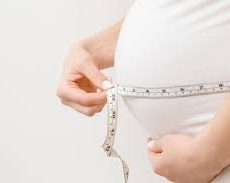What Is Endometrial Hyperplasia?
Endometrial hyperplasia is a condition that affects the lining of the uterus, known as the endometrium. In this condition, the endometrial tissue becomes thicker than normal due to an overgrowth of cells. This excess growth can occur in various forms, ranging from mild to severe. It is important to understand what exactly endometrial hyperplasia is in order to recognize the signs and symptoms, as well as to explore the causes and treatment options available.
Endometrial hyperplasia can be caused by a variety of factors. One of the main causes is an imbalance of hormones, particularly estrogen and progesterone. Estrogen promotes the growth of the endometrial lining, while progesterone helps to control this growth. When there is an insufficient amount of progesterone or an excess of estrogen, the endometrium can become thicker than usual, leading to hyperplasia. Other factors that can contribute to the development of endometrial hyperplasia include obesity, polycystic ovary syndrome (PCOS), and certain medications.
The signs and symptoms of endometrial hyperplasia can vary depending on the severity of the condition. In mild cases, there may be no noticeable symptoms at all. However, as the condition progresses, individuals may experience abnormal uterine bleeding, including heavy or prolonged periods, bleeding between periods, or postmenopausal bleeding. Some individuals may also experience pelvic pain or pressure, as well as an increase in the frequency of urination.
Causes Of Endometrial Hyperplasia
Endometrial hyperplasia is a condition in which the lining of the uterus, known as the endometrium, becomes thickened. This thickening is caused by an overgrowth of cells in the lining, leading to an imbalance between estrogen and progesterone hormones. While there are various factors that can contribute to the development of endometrial hyperplasia, the specific causes can be categorized into two main groups: hormonal imbalances and medical conditions.
Hormonal imbalances play a significant role in the development of endometrial hyperplasia. Estrogen dominance, which occurs when the levels of estrogen are higher compared to progesterone, is one of the common causes. Estrogen stimulates the growth of the endometrium, while progesterone helps to regulate its growth. When there is an insufficient amount of progesterone, the endometrium can continue to grow unchecked, resulting in hyperplasia. Factors that can contribute to hormonal imbalances include obesity, early onset of menstruation, late onset of menopause, and polycystic ovary syndrome (PCOS).
Medical conditions can also lead to the development of endometrial hyperplasia. Chronic conditions like diabetes and high blood pressure can increase the risk of developing the condition. Certain medications, such as tamoxifen (used for breast cancer treatment), can also disrupt the hormonal balance and contribute to the growth of the endometrium. In addition, hormonal therapies, such as estrogen replacement therapy without progestin, can increase the risk of endometrial hyperplasia.
Signs And Symptoms Of Endometrial Hyperplasia
Endometrial hyperplasia is a condition characterized by the abnormal growth of the lining of the uterus, called the endometrium. It is often caused by an imbalance of hormones, particularly estrogen, which stimulates the growth of the endometrial tissue. While endometrial hyperplasia itself may not cause noticeable symptoms, it can lead to more serious conditions such as endometrial cancer if left untreated.
There are several signs and symptoms that may indicate the presence of endometrial hyperplasia. One of the most common symptoms is abnormal uterine bleeding. This may include heavy or prolonged menstrual periods, bleeding between periods, or postmenopausal bleeding. Women with endometrial hyperplasia may also experience pelvic pain or discomfort, especially during intercourse. Additionally, some women may notice an increase in the frequency or urgency of urination.
In order to diagnose endometrial hyperplasia, a healthcare provider will typically perform a thorough evaluation, including a medical history, physical examination, and various tests. One common test used to diagnose this condition is an endometrial biopsy, which involves removing a small sample of the endometrial tissue for further analysis. Other diagnostic tests may include transvaginal ultrasound, hysteroscopy, or dilation and curettage (D&C).
| Common Signs and Symptoms of Endometrial Hyperplasia |
|---|
|
Early detection and treatment of endometrial hyperplasia is crucial to prevent the progression to endometrial cancer. The treatment options for this condition may vary depending on factors such as the severity of the hyperplasia and the patient’s age and reproductive goals. Treatment may involve medication, such as hormonal therapy or progestin therapy, to help regulate hormonal imbalances and reduce the thickness of the endometrial lining. In more severe cases or if cancer is suspected, surgical interventions such as a hysterectomy may be necessary.
Preventing endometrial hyperplasia involves maintaining a healthy lifestyle and managing risk factors. This includes maintaining a healthy weight, exercising regularly, and eating a balanced diet. It is also important to manage underlying conditions such as polycystic ovary syndrome (PCOS) or diabetes, which can increase the risk of hormonal imbalances and endometrial hyperplasia. Regular check-ups with a healthcare provider and routine screenings can help detect any abnormalities early on.
If left untreated, endometrial hyperplasia can lead to complications such as the development of endometrial cancer. It is important to seek medical attention if you experience any signs or symptoms associated with this condition. Your healthcare provider can provide a proper diagnosis and develop a treatment plan tailored to your specific needs.
Diagnosing Endometrial Hyperplasia
Endometrial hyperplasia is a medical condition characterized by the abnormal growth of cells in the lining of the uterus, called the endometrium. This condition can result in various symptoms and complications if left untreated. In order to properly diagnose endometrial hyperplasia, healthcare professionals rely on a combination of medical history, physical examination, and diagnostic tests.
Medical History: When diagnosing endometrial hyperplasia, the healthcare provider will first gather information about the patient’s medical history. This includes details about the patient’s menstrual cycle, any previous gynecological conditions, and the presence of any risk factors such as obesity, diabetes, or hormonal imbalances. Collecting this information helps the healthcare provider to identify potential underlying causes of the condition and tailor the diagnostic process accordingly.
Physical Examination: A physical examination is an essential step in diagnosing endometrial hyperplasia. During the examination, the healthcare provider may perform a pelvic exam to assess the condition of the uterus and surrounding structures. This can help identify any abnormalities or signs of hyperplasia, such as an enlarged uterus or abnormal vaginal bleeding. Additionally, the healthcare provider may also check for other signs of hormonal imbalances or related conditions.
Diagnostic Tests: To confirm the diagnosis of endometrial hyperplasia, healthcare professionals may order a variety of diagnostic tests. One common test is a transvaginal ultrasound, which uses sound waves to create images of the uterus. This imaging test can help assess the thickness and texture of the endometrial lining, as well as detect any potential abnormalities. In some cases, a biopsy may be necessary to obtain a sample of the endometrial tissue for further analysis. This can be done through hysteroscopy or dilation and curettage (D&C). The tissue sample is then examined under a microscope to determine if it is hyperplastic or potentially cancerous.
In conclusion, diagnosing endometrial hyperplasia involves a comprehensive approach that combines medical history, physical examination, and diagnostic tests. It is important for individuals who experience abnormal menstrual bleeding or other related symptoms to seek medical attention promptly. Early diagnosis and proper treatment can help manage this condition effectively and reduce the risk of complications.
Treatment Options For Endometrial Hyperplasia
When it comes to treatment options for endometrial hyperplasia, there are several approaches that can be considered. The choice of treatment will depend on various factors, including the severity of the condition, the patient’s age and overall health, and their desire for future fertility.
One of the common treatment options for endometrial hyperplasia is medication therapy. This usually involves the use of hormonal medications, such as progestins or oral contraceptives, to regulate the menstrual cycle and reduce the thickness of the endometrium. These medications work by balancing the levels of estrogen and progesterone in the body, which helps to control the growth of the uterine lining.
Another treatment option for endometrial hyperplasia is endometrial ablation. This procedure involves the removal or destruction of the endometrial lining using various techniques, such as laser, heat, or freezing. Endometrial ablation is typically recommended for women who have completed childbearing and do not wish to have future pregnancies. It can effectively reduce or eliminate abnormal uterine bleeding associated with endometrial hyperplasia.
In more severe cases of endometrial hyperplasia, hysterectomy may be considered as a treatment option. This surgical procedure involves the removal of the uterus and, in some cases, the ovaries as well. Hysterectomy is usually reserved for women who have not responded to other treatments or for those with a high risk of developing endometrial cancer. However, it should be noted that hysterectomy is a permanent solution and will result in infertility.
Comparison of Treatment Options for Endometrial Hyperplasia
| Treatment Option | Description |
|---|---|
| Medication Therapy | Involves the use of hormonal medications to regulate the menstrual cycle and reduce the thickness of the endometrium. |
| Endometrial Ablation | Removal or destruction of the endometrial lining using techniques such as laser, heat, or freezing. |
| Hysterectomy | Surgical removal of the uterus, and sometimes the ovaries, as a permanent solution for severe cases of endometrial hyperplasia. |
It is important to consult with a healthcare professional to determine the most suitable treatment option for individual cases of endometrial hyperplasia. They can provide a thorough evaluation and consider the patient’s unique circumstances before recommending a course of action. Regular follow-up appointments and monitoring may also be necessary to ensure the effectiveness of the chosen treatment and to detect any potential complications.
Preventing Endometrial Hyperplasia
Endometrial hyperplasia is a condition that occurs when the lining of the uterus, known as the endometrium, becomes abnormally thick. This thickening is often caused by an imbalance of hormones, particularly estrogen and progesterone. While endometrial hyperplasia is not always a cause for concern, it can potentially lead to the development of endometrial cancer if left untreated. Therefore, taking preventive measures is crucial in managing this condition and ensuring overall reproductive health.
One of the primary ways to prevent endometrial hyperplasia is to maintain a healthy weight. Obesity is a risk factor for this condition as excessive fat cells can produce extra estrogen, which can disrupt the hormonal balance in the body. By engaging in regular physical activity and following a balanced diet, individuals can reduce their risk of developing endometrial hyperplasia.
In addition to maintaining a healthy weight, it is essential to keep hormone levels in check. This can be achieved through the use of hormonal birth control methods. Oral contraceptives containing both estrogen and progesterone regulate the menstrual cycle and help prevent excessive thickening of the endometrium. However, it is important to consult with a healthcare provider to determine the most suitable contraceptive option based on individual medical history and needs.
| Preventive Measures for Endometrial Hyperplasia |
|---|
| 1. Maintain a healthy weight |
| 2. Use hormonal birth control |
| 3. Limit intake of estrogen-rich foods |
| 4. Get regular check-ups |
Incorporating a wholesome diet is another crucial aspect of preventing endometrial hyperplasia. It is advisable to limit the consumption of estrogen-rich foods such as red meat and dairy products. Instead, opting for a diet rich in fruits, vegetables, whole grains, and lean proteins can help maintain hormonal balance and reduce the risk of developing endometrial hyperplasia.
Regular check-ups with a gynecologist are vital in monitoring and preventing endometrial hyperplasia. Routine pelvic exams, Pap smears, and transvaginal ultrasounds can detect any abnormalities in the uterus, allowing for early intervention and treatment. Additionally, individuals experiencing irregular menstrual cycles, abnormal bleeding, or other symptoms associated with endometrial hyperplasia should seek medical attention promptly.
In conclusion, preventing endometrial hyperplasia involves a combination of lifestyle choices and medical interventions. Maintaining a healthy weight, using hormonal birth control, limiting the intake of estrogen-rich foods, and getting regular check-ups are all essential measures to reduce the risk of developing this condition. By prioritizing reproductive health and seeking early medical attention, individuals can take proactive steps in preventing endometrial hyperplasia and maintaining overall well-being.
Complications Of Untreated Endometrial Hyperplasia
Untreated endometrial hyperplasia can lead to several complications if left untreated. This condition is characterized by the abnormal thickening of the lining of the uterus, known as the endometrium. Without proper management and treatment, endometrial hyperplasia can increase the risk of developing certain serious health issues.
One of the potential complications of untreated endometrial hyperplasia is the development of endometrial cancer. Endometrial hyperplasia itself is considered a precursor to endometrial cancer, and if left untreated, the abnormal cells in the endometrium can progress to cancerous growth. Regular monitoring and treatment can help prevent this progression and reduce the risk of endometrial cancer.
Heavy or prolonged menstrual bleeding is another complication of untreated endometrial hyperplasia. The thickened endometrial lining can cause excessive bleeding during periods, leading to prolonged or heavy menstrual flow. This can result in anemia, fatigue, and other related symptoms. It is important to address the underlying cause of the abnormal endometrial growth to prevent these complications.
In some cases, untreated endometrial hyperplasia can also lead to the development of uterine polyps. Uterine polyps are abnormal growths that occur in the lining of the uterus. These polyps can cause irregular bleeding, pelvic pain, and even fertility issues. Proper treatment of endometrial hyperplasia can help prevent the formation of uterine polyps and alleviate associated complications.
- Endometrial cancer
- Heavy or prolonged menstrual bleeding
- Development of uterine polyps
| Complications of Untreated Endometrial Hyperplasia |
|---|
| Endometrial cancer |
| Heavy or prolonged menstrual bleeding |
| Development of uterine polyps |




